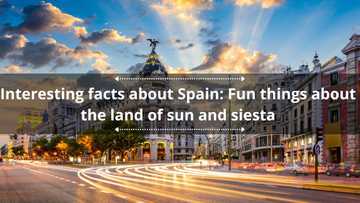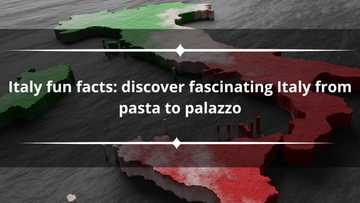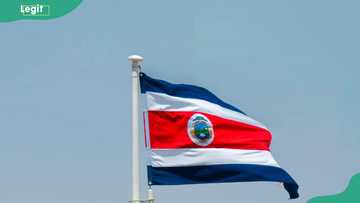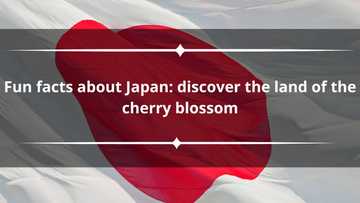30 fun facts about Peru that go beyond Machu Picchu
Peru is a country in western South America. It is known for its fascinating history, culture, adventures and many natural wonders. Many people visit the country for its natural beauty, culture and many attraction sites. Discover some fun facts about Peru to appreciate and deeply understand its culture, history, and diverse landscapes.

Source: Getty Images
TABLE OF CONTENTS
- Must-known fun facts about Peru
- 1. It is home to Machu Picchu, a New Wonder
- 2. Guinea pig is a Peruvian culinary delicacy
- 3. Peru is the source of the Amazon River
- 4. Peru contains over 80% of the world's alpacas
- 5. Peru is home to the world's tallest flowering plant
- 6. Its national tree is the Cinchona
- 7. It has the longest left-handed wave in the world
- 8. Spanish is not its only official language
- 9. It is home to the largest lake on the continent
- 10. It boasts one of the largest condors in the world
- 11. Peru has over 4000 varieties of potatoes
- 12. There are several native languages in Peru
- 13. It is among the most populous countries
- 14. It boasts one of the tallest dunes in the world
- 15. Pisco Sour is Peru's national drink
- 16. Vicuna is Peru's national animal
- 17. The white city of Arequipa is built from volcanic stone
- Fun facts about Peru's culture
- 1. Peruvian couples undergo sirvinacuy before marriage
- 2. Peruvians celebrate a sun festival annually
- 3. Ancient Peruvians buried food with the dead
- 4. Ceviche originated in Peru
- 5. Peruvians still perform Qhapaq Qulla dance
- 6. Peruvians celebrate a national potato day
- 7. Quechua women's hats reveal relationship status
- Scary facts about Peru
- 1. Earthquakes are a common occurrence in Peru
- 2. There are no bridges across the Amazon River
- 3. Some Peruvians live on floating islands
- 4. It is home to Nazca lines
- Fun facts about Peru's history
- 1. Knots were ancient Peruvians' means of communication
- 2. Peru is the origin of the Inca civilisation
- What is unique about Peru?
- What is most visited in Peru?
Peru is the third largest country in South America after Brazil and Argentina. Where is Peru? It has beautiful landscapes, from beaches to mountains and rainforests. It shares borders with Ecuador, Colombia, Brazil, Bolivia and Chile.
Must-known fun facts about Peru
Many love Peru because of its beauty, culture, and history, making it a perfect tourist destination.
1. It is home to Machu Picchu, a New Wonder
Machu Picchu is one of the new Seven Wonders of the World. Often called the 'Lost City of the Incas,' it symbolises the Incan Empire built in 1450 AD. It is 50 miles from Cuzco in the Cordillera de Vilcabamba of the Andes Mountains. In 2007, it was voted one of the World's New Seven Wonders.
2. Guinea pig is a Peruvian culinary delicacy
Guinea pigs, popularly known as pets in many parts of the world, are a Peruvian delicacy. It is a traditional dish called cuy. The dish is roasted and served crispy completely with legs, head and eyes. People travel from all over the world to go and try this delicacy.
3. Peru is the source of the Amazon River

Source: Getty Images
Peru is the home of one of the famous rivers, the Amazon River. Amazon River is the world's second-largest and is 6400 kilometres long. Its source is high in the Peruvian Andes near Machu Picchu and ends in the Atlantic Ocean.
4. Peru contains over 80% of the world's alpacas
Peru is home to three-quarters of the world's alpacas. Alpacas are thought to be around four million in the world. They inhabit different regions, such as Puno, Arequipa and Huancavelica. They are known as one of the most beautiful camelids in South America. Alpacas are an essential symbol of the nation's culture.
5. Peru is home to the world's tallest flowering plant
Puya Raimondii, which belongs to the family of pineapples, is native to the high Andes of Bolivia and Peru. It boasts the tallest flower spike in the world. The plant is also called the Queen of the Andes and is the largest bromeliad in the world. It can produce between 8000 and 20000 flowers over 3 months. Its inflorescences can reach up to 15 metres.
6. Its national tree is the Cinchona
The national tree of Peru is Cinchona. The tree is known as the natural source of quinine, a cure for malaria. The name of the tree originated from the Countess of Chinchon, wife of a Spanish Viceroy of Peru.
7. It has the longest left-handed wave in the world

Source: Getty Images
Surfing is one of the most loved sports, enabling you to connect with nature. Chicama in Peru is known for the world's longest left-handed wave, measuring 4km. Surfing is considered fun between March and November because, during this period, you can get a period of two swells a week.
8. Spanish is not its only official language
Many people think that Spanish is the only language spoken in Peru. However, that's not true because three official languages are spoken nationwide. The languages spoken are Spanish, Quechua, and Aymara.
9. It is home to the largest lake on the continent
Peru is home to the largest lake in South America in terms of volume of water and surface area. Lake Titicaca straddles the border of Peru and Bolivia. Its surface area is 8,372 km square, and its volume is 893 km3.
10. It boasts one of the largest condors in the world
Colca Canyon is the home of the world's largest bird, The Giant Andean Condor. Giant Andean is a vulture-like species known as the largest flying bird. A fully grown adult can reach 15 kilograms. It was a sacred bird to the Incas, and they believed it was a messenger of the skies or heaven.
11. Peru has over 4000 varieties of potatoes

Source: Getty Images
Did you know that there are over 4000 varieties of potatoes with different colours ranging from purple to pink and yellow? Peru is known to grow 4000 varieties of potatoes. Potato is native to the Peuvian-Bolivian Andes.
12. There are several native languages in Peru
Peru is home to 48 native languages. Aside from Spanish, the nation's official language, forty-four native languages are recognised in Peru. Forty-four of them are Amazonian, and four are Andean. The languages spoken in Andean include Quechua, Aymara, Cauqui and Jaqaru.
13. It is among the most populous countries
Peru is South America's fourth most populous country, with over 34 million as of 2024. One-third of the population of Peru lives in the capital city, Lima and its surroundings.
14. It boasts one of the tallest dunes in the world
Cerro Blanco dune, located in the Sechura Desert, is one of the tallest dunes in the world. The dunes make it the best destination for sandboarding. Cerro Blanco dune is around 1,176 metres from the base to the peak. It is set within the beautiful landscape of the Nazca Desert.
15. Pisco Sour is Peru's national drink
Pisco Sour is a drink treasured by Peruvians, and they have set aside a national holiday to celebrate it. It is Peru's national cocktail, made up of lime juice, Pisco, egg white and simple syrup. The drink is celebrated every first Saturday in February.
16. Vicuna is Peru's national animal

Source: Getty Images
Peruvians value Vicuna, which is a wild relative of llamas. They live in the high-altitude areas of the Andes mountains. The Incas valued this animal and used their wool to make garments. The garments were only worn by royalty. Vicunas are highly protected, with a population of about 200000.
17. The white city of Arequipa is built from volcanic stone
Arequipa is a city in Peru, also known as White City. It is called the White City because it was built using white volcanic stone called Sillar. The volcanic rocks make the city white, evident in tall buildings such as churches and mansions.
Fun facts about Peru's culture
Peru was recognised as the World's Leading Cultural Destination in 2023. Below are some fun facts about its culture.
1. Peruvian couples undergo sirvinacuy before marriage
Peru has one of the lowest marriage rates because of a traditional practice called sirvinacuy. This practice treats cohabitation as sufficient proof of commitment. The woman has to work with the mother-in-law and the man with a father-in-law as a sign of readiness for marriage.
2. Peruvians celebrate a sun festival annually
Peruvians celebrate the Sun God, Inti, on the 24th of June. They call this annual festival Inti Raymi, held in Cusco, Peru. A famous leader, Pachacuti, in 1412, created the festival. The Peruvians burn coca leaves and perform traditional dances on this special day.
3. Ancient Peruvians buried food with the dead
The ancient Peruvians buried the dead with food, clothing and other items because they believed they had to continue living a comfortable life in the spirit world. Today, burial varies among the different communities in Peru. Others can cremate and bury the dead on earth or inside the caves.
4. Ceviche originated in Peru

Source: Getty Images
Ceviche, one of the most popular dishes in South America, originated in the Pacific coasts of Peru. The dish consists of diced cubes of raw fish marinated in lemon or lime juice. This delicacy reflects the abundance of fresh seafood in Peru's Pacific coastal town
5. Peruvians still perform Qhapaq Qulla dance
Qhapaq Qulla is an ancient form of masked dance in Peru that is performed at the Cusco Region festivals. This dance is an expression of ethnic identity and pride. This exciting dance consists of both men and women in masks with woven llamas over their shoulders.
6. Peruvians celebrate a national potato day
Potatoes are more than just food in Peru. They are an essential part of Peruvian heritage; others cultivate potatoes to preserve historical traditions. Peruvians celebrate potatoes' historical, food and nutritional importance every 30th May.
7. Quechua women's hats reveal relationship status
Montera, a Quechua word for traditional hat, is an essential element of Quechua women. Through the hats, you can know a woman's marital status. The hats are decorated with flowers, fruits and different colours. The angle at which the hat is worn can also tell if a woman is widowed.
Scary facts about Peru
The scary facts about Peru will make you want to visit the nation so that you can confirm if they are true. Check the ones below.
1. Earthquakes are a common occurrence in Peru
In some countries, it is considered strange when an earthquake happens. However, earthquakes are common in Peru because it is located in a seismic zone. When visiting the country for the first time, you might find it scary, but to the Peruvians, it is a common occurrence.
2. There are no bridges across the Amazon River
Bridges are important because they enable transportation access to critical resources. Amazon River, the second largest river in the world, has no bridges across its entire width. This is because the river is surrounded by rainforests, which makes it inaccessible. People cross the river using boats.
3. Some Peruvians live on floating islands

Source: Getty Images
The Uros, an ancient indigenous Peruvian tribe, live on the Uros floating island on Lake Titicaca. The Incas drove them out when they expanded onto their land. The islands and houses are artificially created from reed grass that floats on Lake Titicaca.
4. It is home to Nazca lines
Nazca lines are a group of geoglyphs made in the soil of the Nazca Desert in southern Peru. The geoglyphs depict plants, animals, and imaginary creatures. Their purpose remains unclear to many, even though archaeologists, anthropologists, and ethnologists have studied them. Most of the Nazca lines have been there for more than 2000 years.
Fun facts about Peru's history
Peru's history has shaped the culture and society of its people, from the Inca Empire, a powerful civilisation, to Spanish colonisation. Below are facts about Peru's history that will help you understand more about the country.
1. Knots were ancient Peruvians' means of communication
The Ancient Peruvians communicated using knots. It is believed that this is the only written language that they had. Different knots were tied in ropes attached to a longer cord. They used coloured strings and tied them in various patterns. This system is called quipu and serves as a means of communication, record-keeping and accounting.
2. Peru is the origin of the Inca civilisation
The Inca civilisation was powerful in South America. It rose from the Peruvian highlands in the early 13th century and was the largest empire in America before the arrival of the Europeans. The Inca civilisation was known for developing sophisticated calendars and surgical and impressive agricultural techniques.
What is unique about Peru?
Peru is renowned for its rich cultural heritage, which blends ancient traditions with vibrant modernity. The iconic Machu Picchu and the diverse cultures of the Andes and the Amazon exemplify this blend.
What is most visited in Peru?
Machu Picchu is the most visited destination in Peru. This is due to its unique construction and the incredible engineering skills of the Incas.
A look into the fun facts about Peru reveals many unknown facts about the country. The nation is known for its rich traditions, cultural heritage, and natural wonders. If you are a travel enthusiast, Peru is a perfect destination.
Legit.ng recently published a list of Texas fun facts. Texas is one of the 50 states of America. It is located in the southern part of the country. It is popularly known as the Lone Star and is famous for its rich history, culture, and distinct accents.
Texas is known as the home of the largest bat colony in America, has weird laws, and is home to many celebrities. Read on for more fun facts about the nation.
Source: Legit.ng













